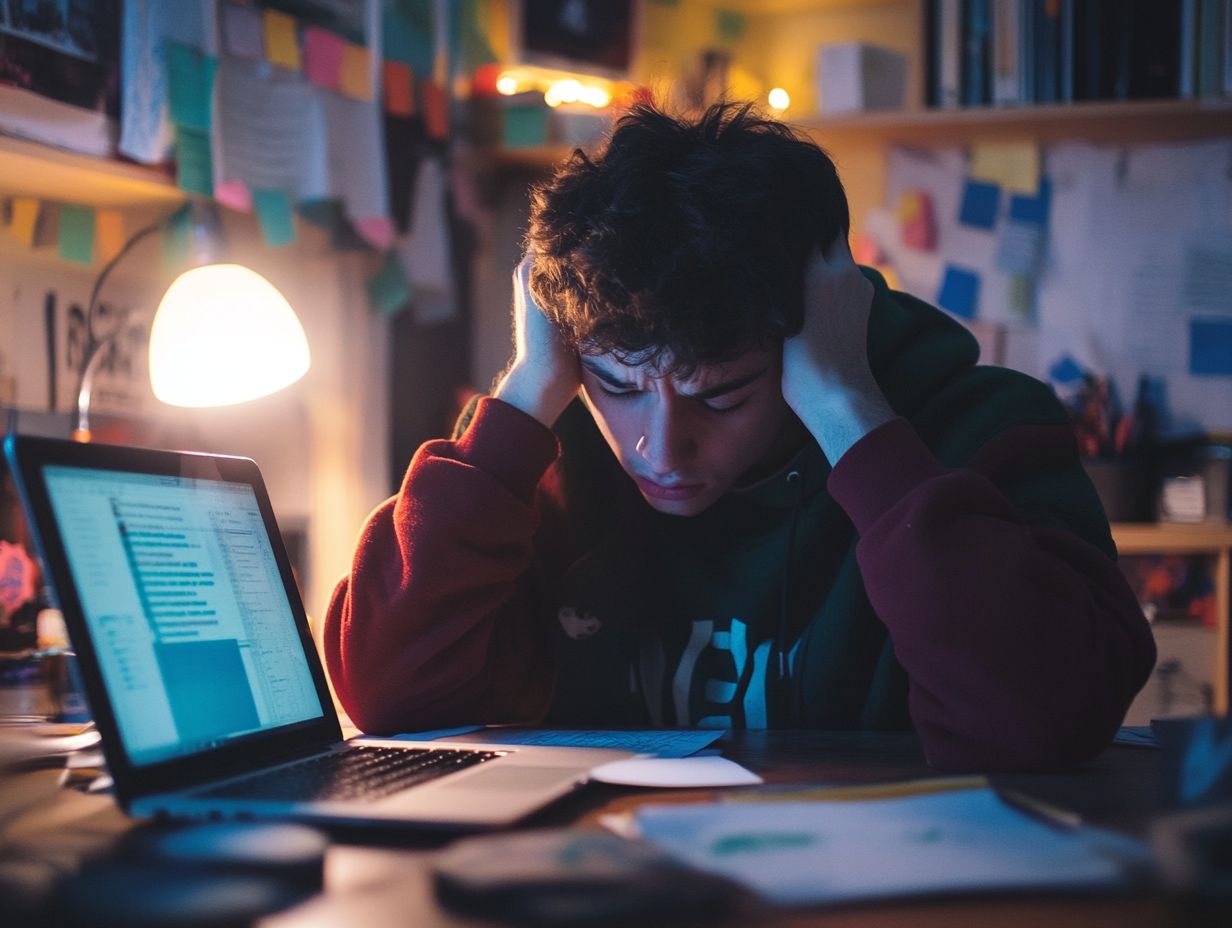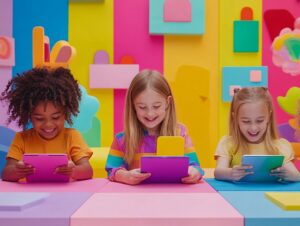Remote learning has significantly transformed the educational landscape, presenting both opportunities and considerable challenges for students and educators alike.
As classrooms transition to virtual platforms, students frequently encounter difficulties stemming from a lack of face-to-face interaction, technical issues, and a decline in motivation.
Concurrently, educators face obstacles such as adapting to new teaching methodologies, effectively engaging students, and assessing their progress in a remote environment.
This article examines these challenges in depth and provides practical solutions to facilitate a more effective and enriching remote learning experience for all participants involved.
Definition and Overview

Remote learning, commonly referred to as online education, denotes the process of acquiring knowledge or skills without the necessity of physical presence in a traditional classroom setting.
This mode of education has experienced considerable growth in recent years, particularly as a response to global events that have necessitated distance learning. It encompasses various formats, including synchronous and asynchronous learning, which enable students to engage with their curriculum at their own pace or during designated times.
Nevertheless, the effectiveness of remote learning is frequently impeded by challenges such as the digital divide, accessibility issues, and educational equity, which can adversely affect student engagement and learning outcomes.
Challenges Faced by Students in Remote Learning
Students frequently encounter a variety of challenges in remote learning environments that can significantly affect their educational experience and overall performance.
Among these challenges are technology-related issues, such as unreliable internet connectivity, which can disrupt access to essential online resources.
Furthermore, the absence of face-to-face interaction with peers and instructors may contribute to feelings of isolation and impede student engagement.
Additional factors, including motivation, self-discipline, time management, and distractions within the home environment, further complicate the learning process, often leading to adverse effects on academic integrity and learning outcomes.
Lack of Face-to-Face Interaction
One of the most significant challenges associated with remote learning is the lack of face-to-face interaction, which can profoundly impact student engagement and emotional well-being. In traditional classroom settings, students benefit from direct social interactions with peers and educators, which foster a sense of community and collaboration.
In virtual classrooms, this essential social interaction diminishes, often resulting in feelings of isolation and decreased motivation. Consequently, students may encounter difficulties in actively participating, adversely affecting their overall learning experience and outcomes.
The absence of immediate feedback and spontaneous conversations can hinder the development of meaningful relationships that are crucial for emotional support. When students engage in person, they not only exchange academic insights but also cultivate friendships that can mitigate stress and promote resilience.
The virtual environment frequently lacks these organic connections, potentially exacerbating feelings of loneliness and disengagement.
Additionally, the reliance on screens for communication may create a barrier to the nuanced understanding of social cues, which are vital for effective collaboration. This decline in social interaction can lead to a decrease in interest, diminishing the overall enjoyment of learning and highlighting the urgent need for innovative strategies to restore a sense of community in online education.
Technology and Connectivity Issues
Technology and connectivity issues pose significant barriers to effective remote learning for many students, often exacerbating the existing digital divide. Students may experience technical challenges, such as hardware malfunctions or unstable internet connections, which can hinder their ability to access educational resources and participate in online classes.
Disparities in resource availability among students from different socioeconomic backgrounds can result in unequal learning opportunities, negatively impacting academic performance and engagement.
These obstacles can create a cascading effect, wherein students lacking reliable access to technology are unable to complete assignments or engage in collaborative projects, further isolating them from their peers. As reliance on digital platforms increases, those with insufficient resources find themselves at a greater disadvantage, unable to utilize the same tools and support systems that facilitate learning for their more privileged counterparts.
This gap not only affects immediate educational outcomes but can also have long-term implications for students’ futures, limiting their potential in today’s technology-driven job market.
Difficulty in Staying Motivated

Maintaining motivation in a remote learning environment presents significant challenges for students, as the absence of structured classroom settings often leads to a decline in self-discipline. The inherent flexibility of online education can introduce numerous distractions, ranging from household responsibilities to digital diversions, complicating effective time management for students. As a result, many learners encounter difficulties in sustaining consistent study habits, which may adversely impact their course completion rates and overall academic outcomes.
Furthermore, the lack of immediate feedback and peer interaction can exacerbate feelings of isolation, further diminishing motivation levels. Students frequently find themselves overwhelmed by competing priorities, with the boundaries between study time and personal life becoming increasingly blurred.
To address these challenges, individuals can implement several effective motivation strategies:
- Establishing a structured daily routine
- Setting specific goals
- Creating a dedicated study environment
These strategies can significantly enhance productivity. Employing time management techniques, such as the Pomodoro Technique, enables students to divide their study sessions into manageable intervals, thereby reducing the likelihood of distractions and fostering sustained focus.
Challenges Faced by Teachers in Remote Learning
Educators encounter a multitude of challenges in remote learning environments that can affect their effectiveness and student engagement.
Transitioning to online teaching methods necessitates substantial modifications in instructional design and the creation of engaging content that resonates with students in virtual classrooms.
Furthermore, educators must navigate the intricacies of assessing student progress remotely, ensuring that they provide adequate support and feedback mechanisms to enhance learning outcomes.
These challenges can place significant strain on educators’ resources and may hinder their capacity to cultivate an inclusive learning environment.
Adapting to Online Teaching Methods
Adapting to online teaching methods represents a significant challenge for educators transitioning from traditional classrooms to remote learning environments. This shift necessitates a comprehensive understanding of instructional design principles and the ability to develop engaging content that captivates students in virtual settings.
Educators must also demonstrate adaptability to various learning preferences and implement diverse engagement strategies to ensure that all students can participate effectively in their online education.
In this evolving landscape, the importance of flexibility cannot be overstated, as educators frequently encounter technological obstacles and varying levels of student engagement that require innovative solutions.
By integrating appropriate instructional design, educators can curate interactive lessons that resonate with students, addressing the unique challenges of remote teaching. This approach not only fosters a sense of community but also enhances motivation among learners, enabling them to thrive despite physical distance.
Engaging activities, such as collaborative projects and multimedia resources, are essential for transforming the remote learning experience into a dynamic environment where students feel connected, valued, and motivated to succeed.
Managing and Engaging Students
Managing and engaging students in a remote learning environment presents considerable challenges for educators, who must navigate communication barriers that can impede meaningful interactions. To ensure that students actively participate in virtual classrooms, innovative approaches to engagement are necessary, as traditional methods may not yield the desired results in an online setting.
It is imperative for teachers to establish effective feedback mechanisms to monitor student performance and foster a collaborative learning environment.
To achieve this, educators may incorporate interactive tools such as:
- Polls
- Breakout rooms
- Discussion forums
These tools facilitate more dynamic dialogues among students. Recognizing individual learning styles and adapting communication methods can help bridge gaps and cultivate connections.
Additionally, creating a sense of community through regular check-ins and personalized feedback encourages students to express their thoughts and inquiries openly.
By embracing flexibility in their teaching strategies and prioritizing student input, educators can mitigate the effects of communication barriers, thereby enhancing overall participation and motivation in remote learning scenarios.
Assessing Student Progress

Assessing student progress in a remote learning environment poses distinct challenges that necessitate the implementation of innovative assessment methods and a careful consideration of academic integrity. Traditional evaluation techniques may not effectively translate to online settings, thereby requiring the development of remote assessment strategies that accurately reflect student performance.
Educators must strike a balance between the need for effective assessment and the potential for academic dishonesty, ensuring that assessment methods adhere to the principles of fairness and equity.
To navigate this complex landscape, a variety of assessment strategies, including open-book examinations, project-based assessments, and online discussion participation, have been utilized. These methods are designed to promote critical thinking and creativity while reducing the likelihood of unethical behavior among students.
The transition to remote assessments also raises significant concerns regarding security and authenticity, as monitoring individual student engagement during online assessments can prove challenging. The limited capacity to observe student behavior in virtual environments may complicate the verification of honest assessment conduct, highlighting an urgent need for robust solutions that uphold academic integrity within this evolving educational framework.
Solutions to Overcome Challenges
To address the challenges associated with remote learning, both students and educators can implement various strategies that enhance the educational experience and improve learning outcomes.
Effective communication is essential for fostering collaboration and engagement in virtual classrooms, enabling students to feel connected and supported throughout their learning journey.
Furthermore, the use of technology for engagement and assessment, combined with comprehensive feedback mechanisms, can help ensure that students remain motivated and that their progress is accurately monitored.
Effective Communication and Support
Effective communication and support are crucial components of successful remote learning, as they serve to bridge the gap between students and educators in virtual environments.
By providing constructive and timely feedback, educators can effectively guide students through challenges and recognize their achievements, thereby fostering motivation and enhancing retention.
Utilizing platforms such as video conferencing, discussion forums, and collaborative tools facilitates seamless interactions that are essential for improving student engagement and participation.
Moreover, implementing diverse student support strategies, such as mentorship programs and peer-to-peer support networks, fosters a sense of belonging among learners.
These strategies are particularly important in remote settings, where feelings of isolation can impede academic progress and personal development, ultimately impacting overall educational success.
Utilizing Technology for Engagement and Assessment
Effectively utilizing technology is essential for enhancing student engagement and streamlining assessment methods in remote learning environments. By integrating various online resources and educational tools, educators can create interactive and engaging learning experiences that resonate with students.
Technology facilitates innovative assessment methods that provide real-time insights into student performance, enabling timely adjustments and personalized support.
Plus traditional teaching methods, leveraging platforms such as virtual classrooms and collaborative software fosters a sense of community among learners, promoting interaction and peer support. These platforms give the power to educators to implement engaging strategies, such as gamification and multimedia content, which capture students’ attention and encourage participation.
Adaptive assessment tools also permit differentiated testing, accommodating individual learning styles and paces. By embracing these technological advancements, educators can maintain student interest while ensuring that assessments remain meaningful and closely aligned with educational objectives, thereby optimizing the overall remote learning experience.
Frequently Asked Questions

What are the challenges of remote learning?
The challenges of remote learning include lack of face-to-face interaction, technical difficulties, distractions at home, and difficulties with time management and self-motivation.
How does lack of face-to-face interaction affect remote learning?
Lack of face-to-face interaction can make it difficult for students to engage and participate in class discussions, ask questions, and receive immediate feedback from their teachers.
What are the common technical difficulties in remote learning?
Common technical difficulties in remote learning include poor internet connection, outdated technology, and difficulty navigating online learning platforms.
What can be done to minimize distractions at home during remote learning?
To minimize distractions at home during remote learning, it can be helpful to create a designated study space, set up a daily schedule, and communicate with family members about the importance of minimizing noise and interruptions during study time.
Why is time management and self-motivation especially challenging in remote learning?
In remote learning, students are responsible for managing their own time and staying motivated without the structure and accountability of a traditional classroom setting. This can be challenging for many students, especially those who struggle with self-discipline.
How can remote learning be improved to address these challenges?
To improve remote learning, schools can provide support and resources for students to improve their time management and self-motivation skills. Teachers can also find ways to incorporate interactive and engaging activities to help students feel more connected and motivated in a virtual setting.




